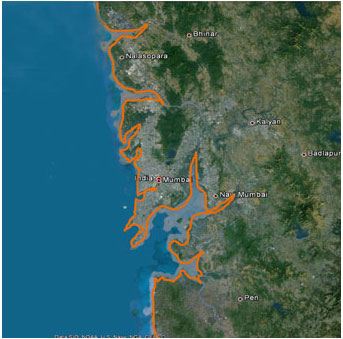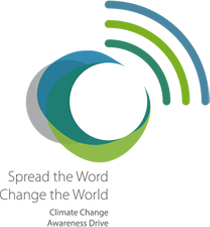Climate Change Communication Toolkit

Human activities like burning of fossil fuels such as coal and oil, clearing of forests, dumping of waste in landfills emit greenhouse gases (GHG) into the atmosphere. These gases are carbon dioxide (CO2), methane (CH4), nitrous oxide (N2O), sulphur hexafluoride (SF6), hydro-fluorocarbons (HFCs) and per-fluorocarbons (PFCs). Such gases accumulate in the atmosphere, and the blanket of GHGs in the atmosphere increases with time. As the amount of GHGs in atmosphere increases, they enhance the natural greenhouse effect and trap more heat. This additional heat causes significant and lasting change in the weather patterns over a long period of time, thus creating the phenomenon called Climate Change.
There are enough scientific evidences to illustrate the impacts of global climate change on the environment. Over the past century, in India, the average surface air temperature is reported to have increased by 0.4 °C. Global warming has led to an increase in the frequency and intensity of climate related disasters in India. According to a global survey, in the year 2007-2008, India ranked third highest in the world regarding the number of significant disasters, with 18 such events in one year! With increasing trend of climate change induced global warming, predictions of more severe climatic events have been made for India. The anticipated increase in precipitation, melting of glaciers and increase in sea levels are projected to influence the Indian climate severely, with an increase in incidence of floods, hurricanes, and storms. For India, this means that human and eco-system including biodiversity can be severely harmed. The latest report from the UN Intergovernmental Panel on Climate Change (IPCC) predicts that the freak weather patterns will not only affect agricultural output and food security, but will also lead to water shortages and trigger outbreaks of water and mosquito-borne diseases such as diarrhoea and malaria in many developing nations, including India.
Mumbai Metropolitan Region (MMR) extends over an area of 4355 square kilometres, forming a part of the north Konkan coastal lowland that extends from Arabian Sea in the west to Western Ghat Escarpment (or Sahyadri) in the east. Consisting of the financial capital of India, Mumbai, MMR houses a number of other growth centres like Thane, Kalyan, Navi Mumbai and Ulhasnagar. It consists of seven municipal corporations, fifteen municipal councils and 995 villages. Housing a population of about 21 million and a very high population density, the region is significantly vulnerable to climate change impacts.
Based on the report by Indian Network for Climate Change Assessment titled ‘Climate Change and India: A 4x4 Assessment, A Sectoral And Regional Analysis for 2030s’, For MMR, rise in temperature by the year 2030 with respect to the 1970s is predicted to be between 1.7°C and 1.8°C. During the same period rainfall has been predicted to increase by 6% - 8% in these regions, while the number of rainy days is predicted to decrease. Thus the intensity of rainfall during the rainy days will be higher.
Such extreme changes in climatic conditions will adversely impact agriculture in the region with productivity of irrigated rice likely to reduce by 4%. Livestock productivity will also be adversely impacted in the process. The region could be affected by a decrease in the water yield to the tune of 10%–50% in 2030s with respect to the 1970s. Impacts on human health have also been predicted due to direct effects like heat stress and indirect effects in terms of vector borne diseases, water borne diseases and malnutrition.
On the positive side, the large population of MMR and financial resources availability could make it the nucleus of action against climate change.
While much has been published and spoken about on Climate Change, there has been little action and resources made available in the Indian context. The Climate Change related Resources and Tools (CCRT) have been developed to facilitate such actions.


